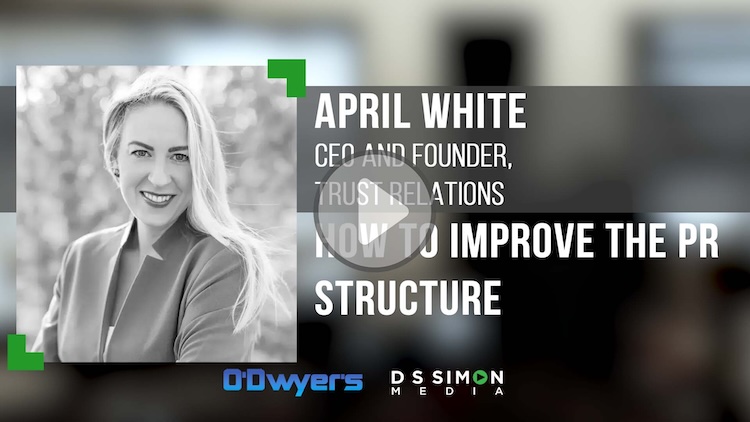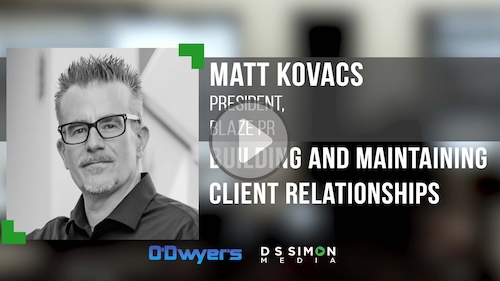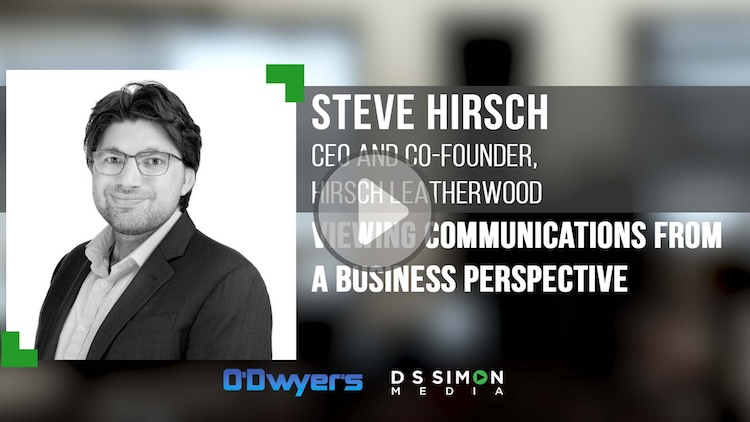 |
| Gary Grates |
It’s planning time and with it, the opportunity to assess the business landscape, your organization’s strategic intent, and your workforce’s capability to perform against unwavering pressure, ambiguity, and uncertainty.
For so many corporate communications functions, the planning cycle becomes a rote exercise updating numbers, objectives, initiatives, and metrics for the coming year.
Yet, the real value in annual planning lies in identifying the one true north star – What Are You Chasing?
Sizing Up 2022
Each year provides a pathway to the future. A portal to propel the organization forward via strong, sophisticated, strategic communications thinking, approach, and efforts. It begins with understanding the competitive relevance of the company or brand amid its segment and customer ecosystem. This is defined ultimately by the business results and financial measures. Further, employees are seeking how their work connects to the company mission and future success and what’s in it for them while assessing the performance from the previous year. The process provides a reality check on what is most important for the business to achieve.
Once decided, every aspect of the business aligns itself from a resources, budget, priority, programming, and measurement standpoint to reflect the direction of the enterprise.
Simple right?
Not necessarily. The breakdown usually starts at the beginning. The failure to discern the overall direction or need of the organization. This tends to become a convoluted set of objectives and financial targets that then get translated into a muddled mosaic of messages and talking points which only confuse employees and customers alike.
Let’s first start with 2022. An incredibly tumultuous year. For organizations the challenges and choices were varied. Coming out of COVID, some leaders chose to reintroduce their companies and brands after a two-year absence dealing with the pandemic. Many rethought the employee experience instituting new rules of working.
Virtually every organization reassessed its purpose and commitments to stakeholders.
The important take-away from 2022 is what will guide your direction and intent going forward.
What is your headline in 2022?
Visualizing 2023
In previewing 2023 from a corporate communications perspective, there are two areas to be focused on: the business situation; and the social reality. Both areas have critical impact on the organization’s strategy for success.
Let’s begin with the social imperative. CEOs, leaders, and communicators must factor the following topics in their positions:
• Health Equity
Premise: Health inequity is pervasive across society and health equity will only exist when all people regardless of geography, race, and economic status can achieve their full potential from a health standpoint.
Leadership Considerations: The linkage between health equity with employee well-being, patient expectations, community engagement, and social determinants.
• ESG
Premise: Environmental, Social, and Governance or ESG is a financial driven set of measures meant to address an organization’s policies and decisions with regard to being a good corporate citizen.
Leadership Considerations: Is the company performing as an ESG entity? If so, how are the principles incorporated into its leadership architecture?
• AI
Premise: AI is beginning to pique the interest of business leaders, media, and consumers alike. The story is about competitiveness, customer service, decision-making, and cost effectiveness.
Leadership Considerations: From ethics, trust and value, AI is a lightning rod for CEOs and business today. CEOs must have a POV on the topic including how AI is impacting health, customer and patient experience, and the company. If not, it’s best to stay away.
• Diversity, Equity and Inclusion
Premise: The catalysts are the changing demographics of the globe and the heightened expectations of Gen Z and millennials when it comes to DE&I in the workforce. This goes beyond numbers but a complete experiential and cultural existence for all people in the workforce and impacts a company brand.
Leadership Considerations: A transparent and open discussion on diversity, equity and inclusion as it relates to culture, health/well-being and the employee brand in general, beginning with an honest appraisal of the company.
• Organizational Confidence
Premise: CEOs from all industries are beginning to raise the concept of confidence as a competitive differentiator. Organizational Confidence comes from three areas: Relevance; Strategic Intent; and Workforce Engagement.
Leadership Considerations: Projecting the organization’s ability to scale and maintain a strong culture adhering to its principles and strategy is a terrific story and one that CEOs are relating as part of their talk track externally.
• Social Tension
Premise: The myriad issues enveloping society based on racial and social injustice. The call for companies to take a much more public and vocal stance as these issues arise.
Leadership Consideration: Balancing the organization’s purpose and efficacy with employee, stakeholder concerns and interests that align with the business’ purpose, mission, and efficacy.
• Mental Health
Premise: Coming out publicly to discuss personal well-being and how you participate in society on a micro and macro level.
Leadership Consideration: Being open, flexible, and active in addressing mental health for society and your workforce through empathy, programming, and benefits as part of your management model.
• Talent and the Future of Work
Premise: Post-COVID the workplace has been upended in new and different ways. Not the least of which are work-life balance, office-home hybrid, the sense of belonging, collaboration, and meaningful work. Retaining talent in such an environment is a critical business priority.
Leadership Consideration: Conveying how business and the company itself are handling this next phase of work in terms of culture, management behaviors, teamwork, and development.
What is the business chasing in 2023?
This is the key question for any leader or communicator. While every business and situation is different, let’s explore the major areas for consideration in calibrating the communications strategy and plan for 2023 starting with the macro environment:
- What does the global competitive marketplace look like
- Where is the game being played?
- How relevant are we?
- Where are we strongest? Weakest?
- How far can our current talent take us?
- Where is the motivation for our business/brands?
From there, we need to dig deeper into our organization and identify the key direction for the enterprise:
- Market Share - Is the business poised to gain share and increase capacity, interest, and motivation for the stock?
- Revenue Growth - Can the business increase revenues via new products and services or by raising prices?
- Profitability - Will the business focus on more profitable areas investing in sock and innovation?
- Portfolio and Service Optimization - Is M&A a part of the business plan in 2023?
- Dimensionalization - Will new customer and product segments, price points, and expanded capabilities be the quest in 2023?
Once the business decides on its direction and core, corporate communications can then determine where to place its bets:
• Relevance
In a social/digital world, relevance is the new reputation. If you’re not relevant today, you don’t exist. From a communications standpoint, relevance is about the following: being searched; being talked about; being engaged with; being sought after; being trusted.
• Relationships
How would you rate the quality of your relationships with key stakeholders? What needs to be improved if the organization is to succeed? How have influencers infiltrated the opinion formation process?
• Culture
Is your corporate culture able to withstand the vagaries of the business?
• Narrative/Story
Do you have a narrative that reflects the current state and future aspiration of the business? How is it being conveyed? Is your story consistent with your brand?
• Visibility
Are your leaders and your POV known in the industry?
• Efficiencies
From cost reduction, restructuring, quality and process improvement, what levers need to be pulled for the organization to achieve its goals?
• M&A Assimilation/Integration
How is the workforce prepared to accept a merger or acquisition? What will such a move do throw the business’ balance off?
• Confidence
Are we communicating in such a manner that people inside and outside the organization are smarter and more engaged?
A Fresh Start
Annual business planning provides a clear set of goals, objectives and strategies aimed at improving an organization’s viability. It is a crucial element of any prudent leadership responsibility and must be met with similar rigor from all areas of the business including corporate communications. Done right, it achieves staff alignment against the business needs.
The process should be a time of reflection, exploration, analysis, education, and experimentation to arrive at the right formula for success.
“Business planning is a mechanism to coalesce thinking of the entire company around one thing: Winning!”
-- Anonymous
***
Gary F. Grates is President and CEO, at GConsulting Group (GCG) a communications consultancy and advisory firm specializing in business transformation, corporate relevance, employee engagement, and organizational communications excellence.










 Have a comment? Send it to
Have a comment? Send it to 
No comments have been submitted for this story yet.